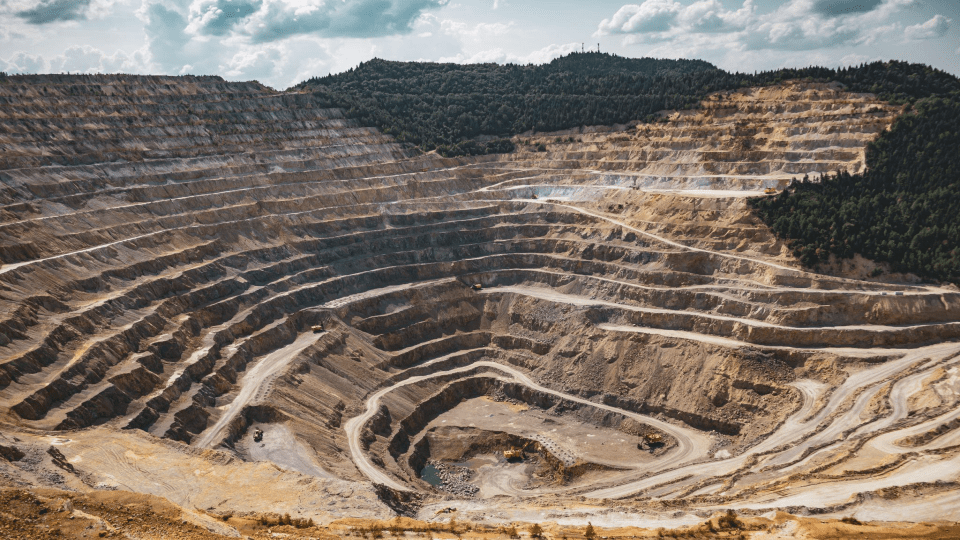In my previous contributions I described the steel and iron value chain (see: Analytics in the steel production value chain), and how iron ore mining faces the blending problem (see: Solving the iron ore blending problem). In this article I give a more general introduction to the blending problem in mining industry. I furthermore point out how to tackle various aspects of the blending problem.
The blending problem in mining industry
The blending problem in the mining industry refers to the challenge of mixing different grades or types of raw materials or ores to achieve a desired composition or quality for downstream processing or product manufacturing. This problem is particularly prominent in industries such as mineral processing, metallurgy, and cement production, where the properties and composition of the raw materials play a crucial role in the final product’s quality and performance.
Here are some key aspects of the blending problem in the mining industry:
- Variability in raw materials: Mining operations often extract ore from different sources or locations, and these ores can vary significantly in terms of mineral content, chemical composition, physical properties, and quality. This variability can be due to geological factors, mineral deposits’ natural heterogeneity, and changes in ore characteristics over time.
- Product quality requirements: Downstream processes or final products may have strict quality specifications. For example, in metallurgy, different grades of ores are blended to achieve a specific chemical composition or metallurgical properties necessary for the production of high-quality metals.
- Optimal blending: The goal of blending is to mix different raw materials in such a way that the resulting blend meets the desired specifications while minimizing costs. Achieving this optimal blend is challenging because it requires balancing the varying qualities and quantities of input materials.
- Process control: Effective blending requires precise control of the blending process, including monitoring the quality of incoming materials, determining blending ratios, and ensuring uniform mixing. Automation and advanced analytical techniques are often used to assist in this process.
- Environmental and economic considerations: Blending decisions can have environmental and economic implications. For example, blending high-grade and low-grade ores can affect resource utilization, energy consumption, and waste generation. Striking a balance between cost-effectiveness and environmental sustainability is a key challenge.
- Real-time monitoring and adjustments: As the quality of raw materials can change over time, mining operations often require real-time monitoring and control systems to adjust blending ratios and ensure consistent product quality.
- Software and modeling: Advanced software and mathematical models are used to optimize blending processes. These tools take into account various factors, including material properties, quality specifications, transportation constraints, and cost considerations.
- Logistics and transportation: Efficiently transporting raw materials from various mining sites to the blending facility can also be a logistical challenge. Minimizing transportation costs and ensuring a steady supply of materials is essential for successful blending.
The blending problem in the mining industry revolves around the need to mix diverse raw materials to meet specific product quality requirements while minimizing costs and environmental impacts. This requires a combination of geological knowledge, process engineering, automation, and mathematical modeling to achieve optimal blending solutions.
Helpful tools and techniques for mine operation managers
Incorporating these tools into mining operations can significantly improve the management of the blending problem. By utilizing geological data and surveys, mine managers gain crucial insights into the composition and variability of ore deposits. Laboratory analysis ensures that the quality and composition of raw materials are well-understood, enabling informed blending decisions.
Specialized mining software and modeling tools assist in simulating and optimizing blending scenarios, considering factors like ore grades, material properties, transportation constraints, and costs. Process control systems help monitor and adjust the blending process in real-time, ensuring that desired blend ratios are maintained, and final product quality standards are met.
Automation, including automated sampling and analysis, enhances the consistency of the blend, even as raw material properties fluctuate. Material tracking and RFID technology provide transparency and traceability in the supply chain. Data analytics and machine learning can analyze historical data to optimize blending strategies and predict variations in raw material properties.
Quality control instruments like XRF analyzers and in-line sensors measure material properties in real-time, enabling immediate adjustments. Material handling equipment, such as conveyors and silos, ensures efficient transport and mixing of materials.
Environmental and economic assessment tools help mine managers make informed decisions by evaluating the environmental and economic impact of blending choices, promoting a balance between quality, cost, and sustainability.
Ultimately, a combination of these tools, along with trained personnel with expertise in mining engineering, process optimization, and geology, empowers mine managers to tackle the blending problem effectively. This leads to more efficient and cost-effective production processes, ensuring that product quality requirements are consistently met.
Related SCDA articles and contributions
Here are some articles and tools on the SCDA blog that will take you further in your understanding of analytics for problems similar to the blending problem:
- Link: Setup sequencing with Excel Solver
- Link: Oil pump Python optimization
- Link: Oil pump capacity Excel model
- Link: Oil blend Excel Solver optimization
Mining engineer with industrial iron ore mining and pig iron production experience. Mining operations simulation expert.





Leave a Reply